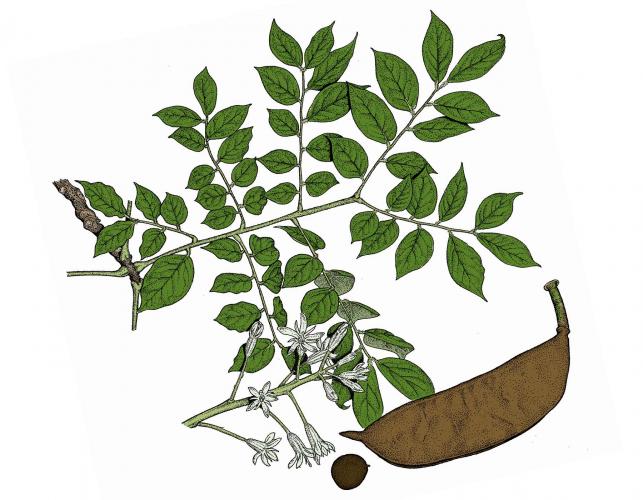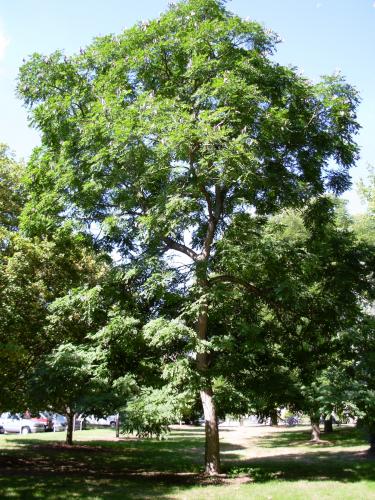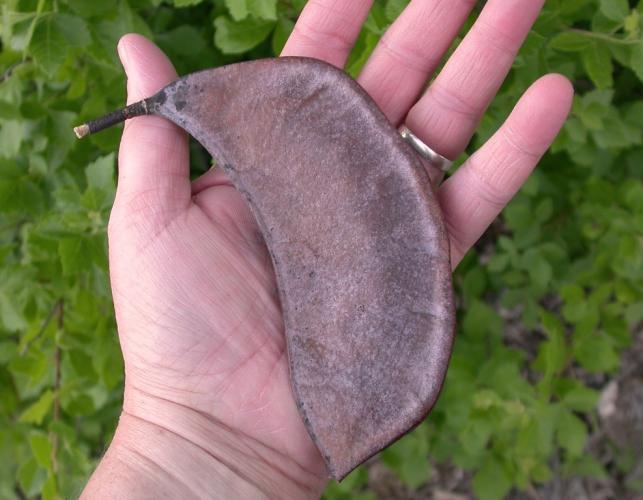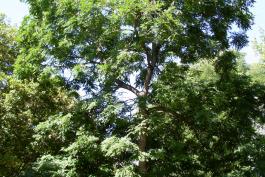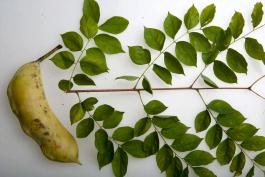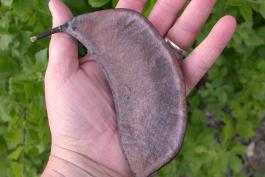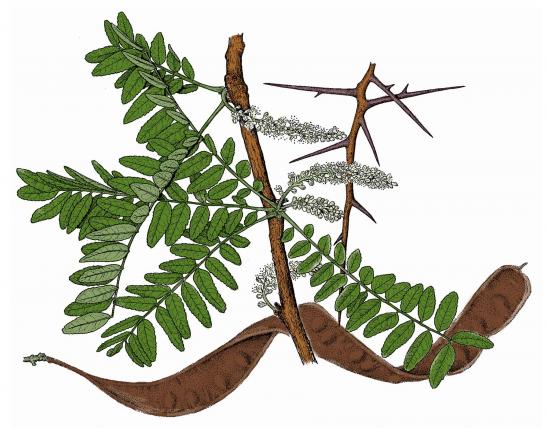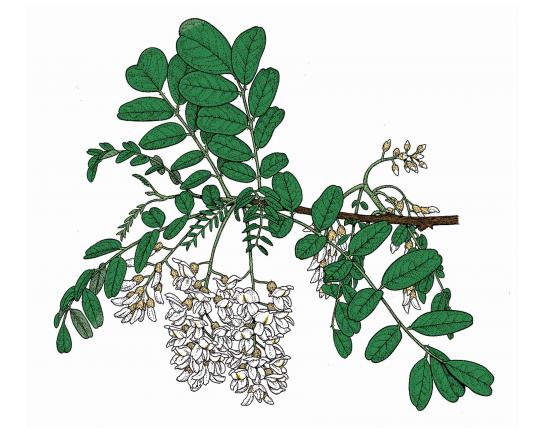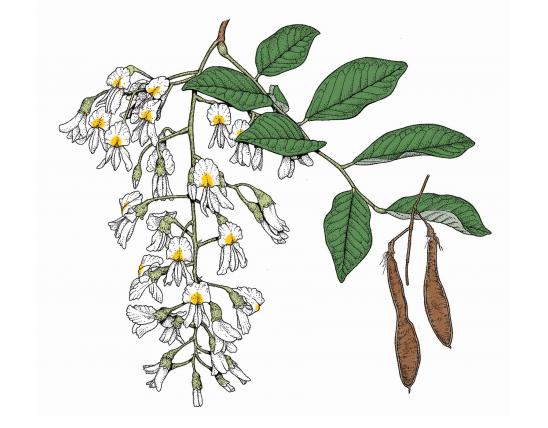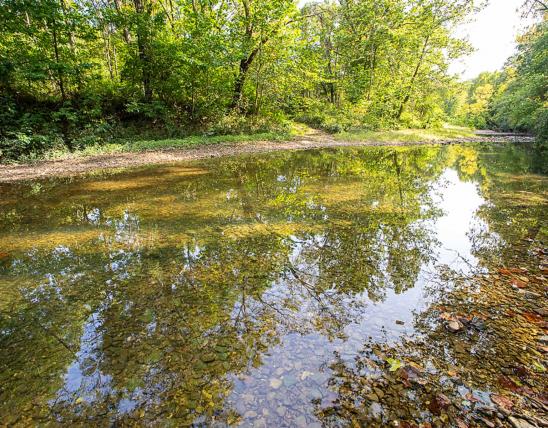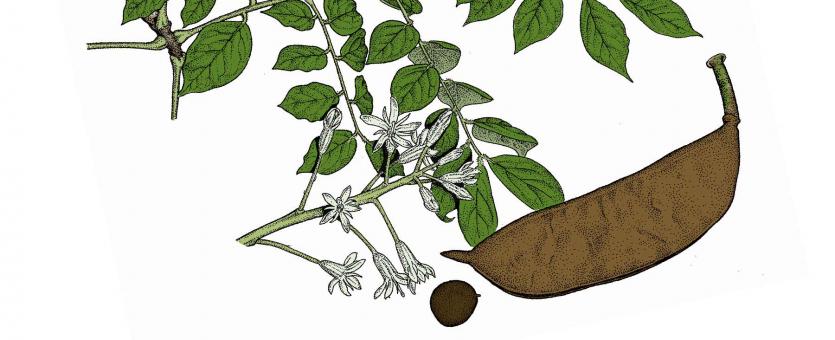
Kentucky coffee tree is a medium tree with stout, blunt branches forming a narrow, rounded crown.
Leaves are alternate, compound, 1–3 feet long, 1–2 feet wide, with 5–9 branches; each branch with 7–14 leaflets; leaflets ¾–3 inches long, 1–1½ inches wide, broadest at or below the middle, margin lacking teeth, tip abruptly pointed; upperside dark green; underside paler, smooth.
Bark is gray to brown, shallow-grooved, with scaly ridges that curl away on one edge from the trunk.
Twigs are short, blunt, contorted, reddish brown, hairy, later grayish brown, smooth; pores numerous, orange; buds barely protruding from a silky-lined cavity.
Flowers May–June. Greenish white, about ¼ inch long; male and female flowers separate or on the same tree, in clusters.
Fruits October, persisting through winter. Pods 4–10 inches long, brownish black, thick, leathery, with 3–5 seeds; seeds blackish, rounded, flattened, ¾ inch long, very hard shelled, in a sweet, sticky pulp; pods fall to the ground unopened in late winter.
Height: to 60 feet.

Statewide.
Habitat and Conservation
Occurs in bottomland forests along streams and in moist woods at the base of bluffs. This species has the largest leaves of any native Missouri tree (remember that a compound leaf counts as an entire, single leaf). When this plant was brought to Europe, it was greeted as a curiosity. It is a handsome shade tree with a unique appearance and unusual bark. Small clones can arise from root sprouts.
Status
Widespread, but nowhere common. Usually found in small colonies in places where conditions are favorable. The seeds today commonly fall to the ground beneath the trees, to be dispersed by water, if by anything at all — which helps explain their bottomland distribution. In prehistoric times, however, large, now-extinct mammals probably ate the pods, swallowing the seeds and dispersing them, ready to germinate, far away from the parent tree.
Human Connections
An attractive shade tree, cultivated since 1748. The wood has been used for posts, furniture, fuel, cabinetry, interior finish, and construction. Native Americans made coffee from roasted, ground seeds (raw seeds are toxic), and European settlers apparently learned from them, hence the common name.
Ecosystem Connections
Not many animals eat the pods, though squirrels and deer sometimes do. It’s probable that giant sloths, mastodons, mammoths, and other large mammals — megafauna that lived on this continent for millions of years and became extinct only 10,000–20,000 years ago — were this tree’s seed dispersers.
